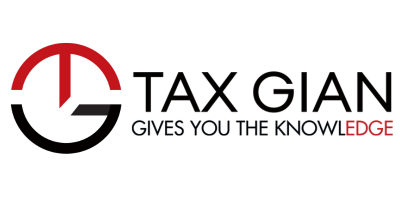Global tax regulators have consistently struggled to regulate how large businesses operate, especially those that are digital, mobile, and multinational. Many growing countries have seen their tax base shrink, while profits are shifted elsewhere. This has led to increasing frustration among governments and the public alike. In response, the OECD introduced two major reforms: Pillar One and Pillar Two of the BEPS 2.0 project. These aim to make international taxation fairer and ensure that big businesses pay their fair share of taxes.
Let Tax Gian break down what these projects mean, how they function and help you apprehend your liabilities and comply better.
Pillar One: Sharing the Profits Where Sales Happen
Pillar One is about granting taxing rights to countries where customers are located, even if the business has no physical presence in those countries. This changes the old rule that taxed companies mainly where they had offices, factories, or people on the ground.
Here’s what it does:
- It allows part of the profits of big multinational businesses to be taxed in the countries where their customers are.
- It mostly affects the world’s largest and most profitable companies, especially digital and tech-focused ones.
- The rule only applies to a portion of the profits above a certain profit margin, which is then divided and taxed in the customer countries.
By doing this, countries that were missing out on tax revenue now have a right to claim a share of those profits. This also brings more fairness to the global system and helps balance things out for smaller countries. Get more acuities from tax agents in the UAE.
Pillar Two: Making Sure the Big Players Pay at Least 15% Tax
Pillar Two is about setting a global floor for corporate taxation. It says that large multinational enterprises (MNEs) must pay at least 15% tax on their profits, no matter where they operate.
Here’s how it works:
- MNEs with annual revenue of EUR 750 million (3 Billion AED approx) or more must comply.
- If their effective tax rate in a country is below 15%, a “Top-up Tax” will be charged to bring it up to that level.
- This is designed to stop a race to the bottom, where countries compete by offering extremely low tax rates.
The UAE has implemented Pillar Two, effective January 1, 2025. The rules are captured in the Domestic Minimum Top-up Tax (DMTT). This affects MNEs with operations in the UAE and ensures they pay the minimum required tax if their UAE tax rate falls short. Learn deeply about the DMTT regulations from tax agents in Dubai.
Who Is Covered Under Pillar Two in the UAE?
The DMTT applies to:
- Multinational groups with revenues of at least EUR 750 million (3 billion AED approx) in two of the recent four taxable years.
- Groups with operations in more than one country.
- UAE entities that are part of such groups.
However, UAE-headquartered groups with no overseas operations are not affected.
Certain entities are excluded from the DMTT, including:
- Government bodies
- Non-profits
- Pension funds
- Investment funds
- Real estate investment vehicles
These groups don’t pay the Top-up Tax, though their income may still count towards the revenue threshold.
Calculating the Top-up Tax: Step-by-Step
- Calculate Total UAE Income and Taxes Paid
Add up the income and covered taxes of all UAE entities that are part of the group. - Find the Effective Tax Rate (ETR)
Divide the total tax by the total income and multiply by 100. - Check If Top-up Tax Is Needed
Subtract the ETR from 15%. If the ETR is less, a Top-up Tax applies. - Subtract the Allowance
The regulations offer some relief through a “Substance-based Income Exclusion,” based on payroll and assets. - Calculate Final Tax
Apply the Top-up percentage to the amount of income left after subtracting the allowance.
The above is a general method, however, tax agents in Dubai can help you in accurate calculations.
Safe Harbours and Exemptions
To reduce the compliance burden, the rules offer several safe harbours:
- De minimis: No tax if UAE revenue is under EUR 10 million and profits under EUR 1 million.
- Transitional Safe Harbour: Applies for fiscal years before 2028, based on simplified tests.
- Initial Phase Exclusion: MNEs with limited global presence get a 5-year exemption.
- Simplified Calculations: Permanent relief for companies using alternate, more straightforward calculations.
These are helpful for new MNEs that are just starting to expand globally.
How can Tax Gian Assist?
Pillar One and Pillar Two aim to fix long-standing problems in international taxation. The changes are significant, especially for large businesses operating across borders. Tax Gian recommends that for MNEs in the UAE, early action is essential, especially with the DMTT taking effect in 2025. The new rules may look complex, but with the proper assistance and advice of our tax agents in the UAE, compliance is achievable. Our experts are devoted to helping you comply 100%.



